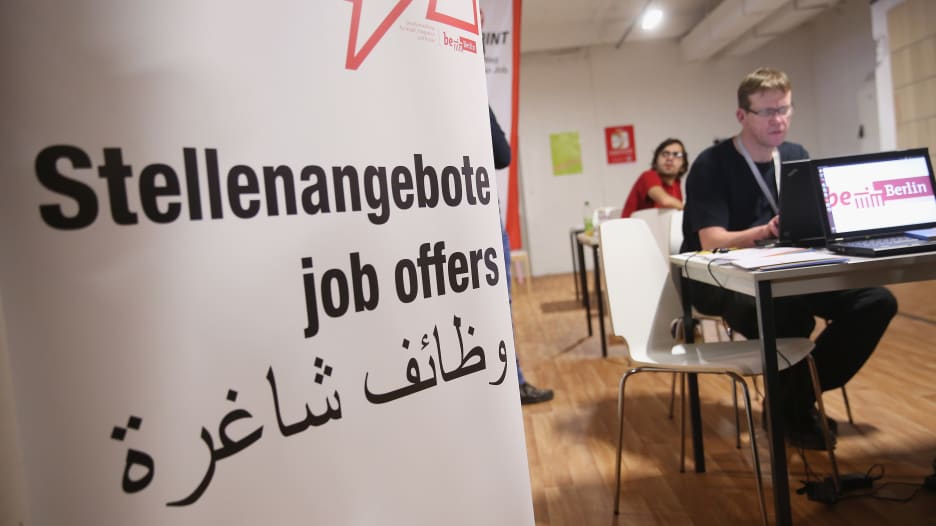نشر هذا المقال بالتعاون مع موقع التوظيف الإلكتروني بيت.كوم
دبي، الإمارات العربية المتحدة (CNN) – هل فكرت يوماً بمدى تأثير العمل ضمن فريق على شركة ما وأهدافها؟ أو بالعوامل التي تؤثر إيجاباً على فريق العمل أو التحديات التي تؤثر على كفاءته؟
يظهر استبيان "العمل ضمن فريق في الشرق الأوسط وشمال أفريقيا"، بعض المعلومات الهامة حول مدى تأثير العمل ضمن فريق والتحفيز على الشركة وأهدافها. وقد صرح حوالي ثلثي المهنيين في المنطقة (62.4%) بأنهم يفضلون الوظائف التي تتطلب العمل ضمن فريق، مقابل 7% فقط ممن يفضلون الوظائف التي تتيح لهم العمل بشكل مستقل.
وتُظهر النتائج أن العمل ضمن فريق والتحفيز هما عاملان أساسيان لتحسين أداء الموظفين والشركة على حد سواء، حيث يساهمان في تعزيز إنتاجية الأفراد عبر التعاون مع بعضهم البعض. وقد صرّح عدد كبير (94%) من المجيبين أن العمل ضمن فريق يؤثر إيجاباً على إنتاجيتهم، كما قال 70% إنهم يشعرون بتحفيز أكبر عند العمل ضمن فريق، بينما قال 84% إنهم يستمتعون بالعمل ضمن فريق إلى حد كبير. من ناحية أخرى، يعتبر 11% فقط من المجيبين أن العمل بشكل مستقل يحفزهم بشكل أكبر، بينما قال 2% فقط إنهم لا يستمتعون بالعمل ضمن فريق.
وإضافة إلى تعزيز الإنتاجية في الشركة، يتيح العمل ضمن فريق للموظفين فرصة تعزيز معرفتهم وتطوير مهاراتهم. وقد كشف المجيبون في الاستبيان عن الأسباب التي تجعلهم أكثر حماساً للعمل في فريق، حيث شملت: العمل مع أشخاص مختلفين والتعلّم من وجهات نظر متنوعة (49%)، وتبادل الأفكار مع أشخاص آخرين للتحقق من صحتها ودعمها (20%)، والقدرة على تقسيم المهام لتعزيز الكفاءة (13%)، ولعب دور قيادي عند العمل مع الآخرين (17%).
في الواقع، تركز الشركات في جميع أنحاء الشرق الأوسط حالياً على تعزيز سعادة الموظفين وتحفيزهم لزيادة إنتاجيتهم عبر العمل ضمن فريق. وقد قال 60% من المجيبين بأن شركاتهم تشجع العمل ضمن فريق إلى حد كبير، وقال 24% إن شركاتهم تشجعه إلى حد ما، فيما صرح 6% فقط بأن شركاتهم لا تشجعه على الإطلاق.
ويشعر الموظفون الذين يعملون ضمن فريق بمسؤولية أكبر تجاه تحقيق الهدف المشترك، حيث قال 66% من المجيبين إنهم يشعرون بمسؤولية أكبر عند العمل ضمن فريق، فيما قال 3٪ فقط إنهم يشعرون بمسؤولية أقل عند العمل ضمن فريق. من جهة أخرى، قال 28% من الموظفين إن العمل ضمن فريق لا يؤثر على مستوى مسؤوليتهم.
ويساعد اتباع ممارسات توظيف معينة في الشركات أصحاب العمل على بناء فرق عمل تمتلك حافزاً كبيراً للتعاون مع بعضها البعض. ويتفق الموظفون مع ذلك، حيث يعتقد 75% أنه من المهم للغاية توظيف أشخاص قادرين على العمل مع الآخرين، بينما يرى 16% بأن هذا الأمر مهم إلى حد ما، في حين يعتقد أقل من 2% بأن هذا الأمر لا أهمية له.
وقد شارك المجيبون أيضاً رأيهم حول الحجم المثالي لفرق العمل، حيث يُعتبر فريق العمل الذي يتألف من شخصين إلى 5 أشخاص مثالياً (وفقاً لـ 32% من المجيبين)، يليه الفريق الذي يتألف من 6 إلى 10 أشخاص (وفقاً لـ 29% من المجيبين).
ويؤدي بناء فرق عمل متجانسة ومتحمسة للعمل إلى زيادة إنتاجية الشركات، ورفع مستوى رضا عملائها، وتعزيز كفاءة موظفيها لتصل إلى أعلى مستوياتها. ووفقاً للمهنيين في منطقة الشرق الأوسط وشمال أفريقيا، يوجد العديد من العوامل التي تؤثر بشكل إيجابي على فرق العمل وهي: التواصل المفتوح والذي يعتبر العامل الأهم (وفقاً لـ41% من المجيبين)، يليه تنوع أعضاء الفريق (21%)، ودعم الإدارة (19%)، والمسؤولية والمكافآت (15%).
وفيما يتعلق بالتحديات التي قد تؤثر على كفاءة فرق العمل، فقد شملت: توزيع المهام بشكل غير متكافئ (29%) وانعدام المسؤولية (29%)، يليهما الخلافات الشخصية (20%)، والتفكير الجماعي (15%).








